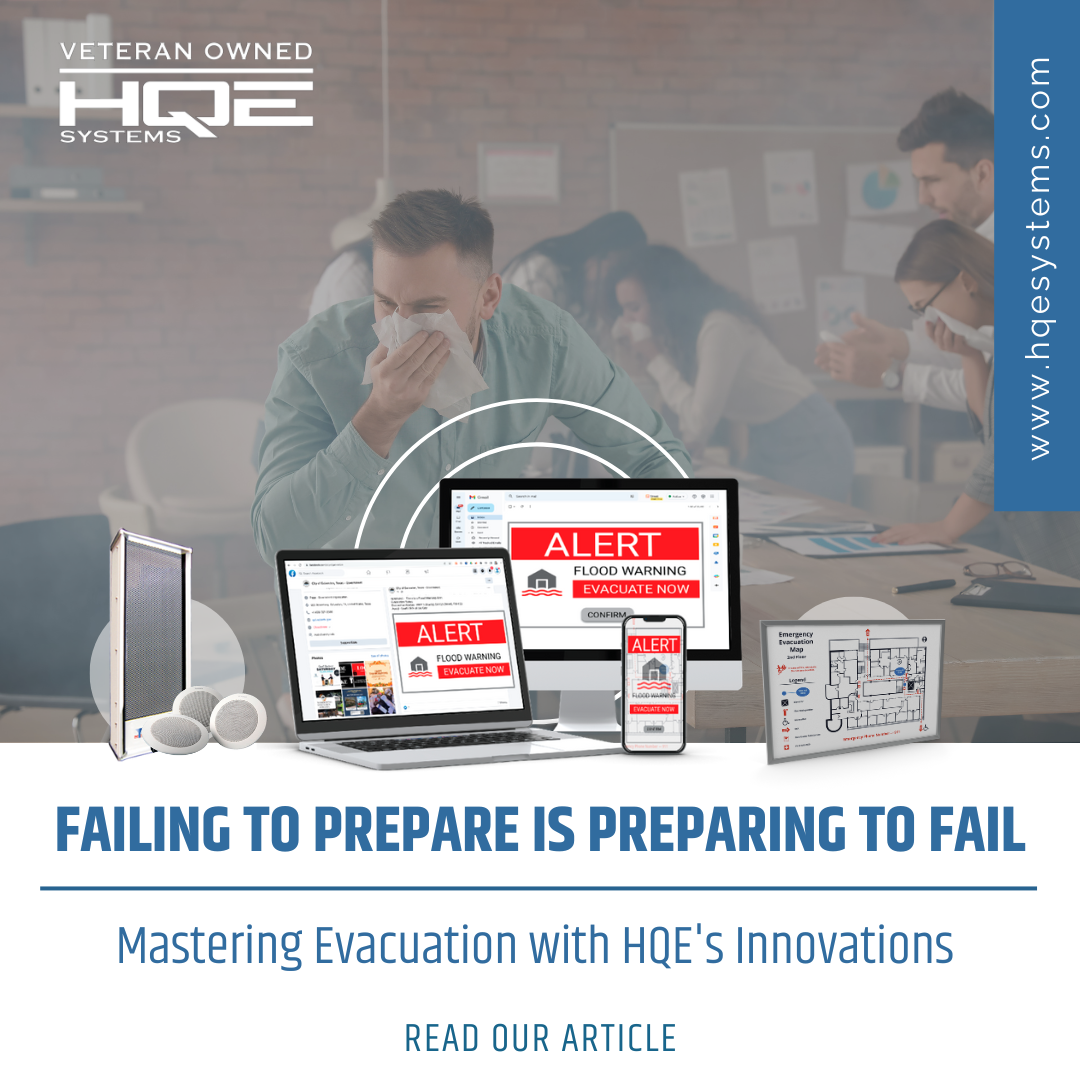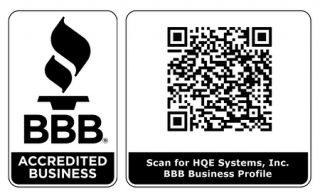Navigating the Maze: Overcoming Evacuation Challenges in Emergencies
Understanding Emergency Evacuation Challenges
In the face of emergencies, unpredictability is the only certainty. Whether it’s the sudden onset of a natural disaster, an unforeseen technological mishap, or a security threat emerging from the shadows, the difference between chaos and order, despair and hope, often lies in our preparedness and response capabilities. Today, as we stand on the brink of technological evolution and social change, the need for effective evacuation and preparedness strategies has never been more pressing. This blog endeavors to peel back the layers of complexity surrounding emergency evacuations, revealing the stark challenges that impede our path to safety. We will journey through the labyrinth of obstacles, guided by insights and illuminated by innovative solutions that promise not just to navigate but to transform this landscape. Join us as we embark on this critical exploration, where preparedness meets innovation, and discover how to fortify our communities against the caprices of fate.
sudden onset of a natural disaster, an unforeseen technological mishap, or a security threat emerging from the shadows, the difference between chaos and order, despair and hope, often lies in our preparedness and response capabilities. Today, as we stand on the brink of technological evolution and social change, the need for effective evacuation and preparedness strategies has never been more pressing. This blog endeavors to peel back the layers of complexity surrounding emergency evacuations, revealing the stark challenges that impede our path to safety. We will journey through the labyrinth of obstacles, guided by insights and illuminated by innovative solutions that promise not just to navigate but to transform this landscape. Join us as we embark on this critical exploration, where preparedness meets innovation, and discover how to fortify our communities against the caprices of fate.
The Complex Landscape of Emergency Evacuations
Emergency evacuations highlight the intersection of human vulnerability and resilience. In navigating this delicate balance, we confront a series of profound challenges that demand innovative, compassionate solutions.
Communication Barriers: Bridging the Information Divide
Expanded Scenario: Imagine a rapidly spreading forest fire nearing a rural community. The emergency alert system broadcasts evacuation orders, but the message fails to reach those living in remote areas with limited cell service. A family, unaware of the approaching danger, plans to stay put until a neighbor, fleeing the area, knocks on their door. This last-minute warning underscores the critical gaps in our communication systems during emergencies.
community. The emergency alert system broadcasts evacuation orders, but the message fails to reach those living in remote areas with limited cell service. A family, unaware of the approaching danger, plans to stay put until a neighbor, fleeing the area, knocks on their door. This last-minute warning underscores the critical gaps in our communication systems during emergencies.
In-depth Discussion:
Effective communication during emergencies is a multifaceted challenge. Beyond the initial dissemination of information, ensuring the clarity and comprehensibility of messages is paramount. Diverse populations with varying levels of literacy, language proficiency, and accessibility needs require tailored communication strategies. Drawing on insights from the NCBI study, we learn that integrating multilingual alerts and using symbols or audio messages can enhance understanding across different community segments. Innovations in communication technology, such as satellite messengers for remote areas, can further close the information gap, ensuring timely and inclusive communication.

Physical and Psychological Stress: Navigating the Human Element
Expanded Scenario: In an urban center, a sudden terrorist threat triggers an evacuation alert. The dense population, already on edge from recent events, reacts with panic. Amidst the chaos, individuals struggle to process the situation, leading to a stampede that results in injuries and impedes the evacuation process. The collective psychological burden, fueled by fear and uncertainty, creates a tangible barrier to orderly evacuation.
evacuation alert. The dense population, already on edge from recent events, reacts with panic. Amidst the chaos, individuals struggle to process the situation, leading to a stampede that results in injuries and impedes the evacuation process. The collective psychological burden, fueled by fear and uncertainty, creates a tangible barrier to orderly evacuation.
In-depth Discussion:
The FSU research illuminates the profound impact of stress on cognitive function during emergencies. Stress reduction strategies, such as the establishment of quiet zones or the deployment of mental health first responders, can provide sanctuaries of calm within the chaos. Additionally, training community leaders and educators in stress management techniques can equip them to serve as pillars of support, guiding their communities through the turbulence of evacuation with composure and empathy.
Special Needs Considerations: Ensuring Inclusivity in Crisis
Expanded Scenario:
During the evacuation for a looming hurricane, a community center serving as a refuge fails to accommodate the needs of individuals with sensory processing disorders, creating an environment overwhelming in noise and chaos. This oversight illustrates the broader challenge of creating evacuation plans that genuinely cater to the entire spectrum of human needs.
refuge fails to accommodate the needs of individuals with sensory processing disorders, creating an environment overwhelming in noise and chaos. This oversight illustrates the broader challenge of creating evacuation plans that genuinely cater to the entire spectrum of human needs.
In-depth Discussion:
Inclusive planning extends beyond physical accommodations to consider the sensory and emotional environments of evacuation spaces. Strategies highlighted in Cornell University’s guidelines advocate for the use of sensory maps that indicate quiet areas and the availability of sensory aids. Training emergency personnel in disability awareness and establishing a registry for individuals with specific needs can further personalize support during evacuations, ensuring no one is left behind.
Infrastructure Limitations: Building Capacity for Safety
Expanded Scenario:
A coastal town faces an unprecedented evacuation due to an incoming tsunami. The single road leading out of town quickly congests, trapping residents in their cars as the disaster looms closer. This bottleneck, a result of infrastructure unprepared for the scale of evacuation required, highlights the need for comprehensive planning that considers all aspects of the physical environment.
single road leading out of town quickly congests, trapping residents in their cars as the disaster looms closer. This bottleneck, a result of infrastructure unprepared for the scale of evacuation required, highlights the need for comprehensive planning that considers all aspects of the physical environment.
In-depth Discussion:
Overcoming infrastructure limitations requires a forward-thinking approach that integrates technological advancements and environmental planning. Smart city technologies, such as adaptive traffic management systems, can dynamically adjust to changing conditions, optimizing evacuation routes in real-time. The development of vertical evacuation structures in tsunami-prone areas represents another innovative solution, providing safe havens when escape routes are cut off. By reimagining our infrastructure with a focus on flexibility and resilience, as suggested by Cornell University’s research, we can enhance our capacity to protect communities in the face of disaster.
Towards a More Resilient Future
The challenges of emergency evacuations are as diverse as they are daunting. Yet, within each challenge lies an opportunity for growth, innovation, and deeper understanding. By leveraging research, embracing technology, and prioritizing inclusivity, we can transform our approach to emergency evacuations, building a framework of preparedness that stands resilient against the uncertainties of the future.
Advanced Strategies in Emergency Management Planning and Preparedness
For emergency managers, the orchestration of effective planning and preparedness protocols is paramount. Your role not only demands a comprehensive understanding of potential risks but also requires the foresight to develop adaptable, scalable strategies capable of addressing a wide spectrum of emergencies. Drawing upon the foundational guidelines provided by experts at the CDC and insights from Walden University, let’s delve into the sophisticated planning and preparedness efforts that form the cornerstone of successful emergency management.
Strategic Comprehensive Planning: A Blueprint for Resilience
Comprehensive planning serves as the blueprint for emergency management, encompassing the identification, assessment, and mitigation of risks. This strategic framework demands a rigorous approach, leveraging both the analytical rigor provided by the CDC’s planning resources and the operational insights offered by Walden University. Key elements include:
This strategic framework demands a rigorous approach, leveraging both the analytical rigor provided by the CDC’s planning resources and the operational insights offered by Walden University. Key elements include:
- Risk Analysis and Mitigation: Conduct thorough risk assessments to identify vulnerabilities within your community or organization. Develop mitigation strategies that reduce potential impacts, focusing on both immediate and long-term solutions.
- Resource Allocation and Management: Efficiently manage resources by identifying critical assets, allocating them based on priority, and ensuring their readiness through regular audits and updates.
- Interagency Collaboration: Forge strong partnerships with local, state, and federal agencies, NGOs, and private sector stakeholders. These collaborations are vital for sharing resources, information, and support, creating a cohesive response network.
Elevating Preparedness Measures: Operational Excellence
Preparedness transforms strategic plans into actionable realities. For emergency managers, this involves a multi-faceted approach that not only prepares your team but also ensures that operational capabilities are at their peak when emergencies strike.
- Advanced Training and Drills: Implement cutting-edge training programs and comprehensive drills that challenge and refine both individual and team response capabilities. Simulate complex, multi-hazard scenarios to test decision-making processes and operational readiness under pressure.
- Technological Integration: Utilize the latest in emergency management technology to enhance communication, information sharing, and situational awareness. From mass notification systems to incident management software, the strategic deployment of technology can significantly amplify your operational capacity.
- Community Preparedness Leadership: While the community may not be your primary focus, empowering community leaders and organizations through education and resources can extend your operational reach. Initiatives that encourage self-sufficiency and resilience within the community indirectly support broader emergency management goals.

Emergency managers stand at the forefront of crisis response, navigating the challenges of disaster preparedness with skill and determination. The complex landscape of emergency management requires not only a solid foundation in planning and preparedness but also a commitment to ongoing learning and adaptation. By embracing the comprehensive planning strategies and preparedness measures outlined, you can enhance your ability to protect and serve your communities effectively.
In leveraging the expertise and resources available through the CDC and Walden University, you are equipped to advance your emergency management practices, ensuring that when disaster strikes, your response is characterized by efficiency, coordination, and resilience.
Innovative Solutions from HQE Systems: Addressing Emergency Management Challenges
In the constantly evolving field of emergency management, the challenges of comprehensive planning, preparedness, and effective response are ever-present. HQE Systems stands at the forefront of innovation, offering cutting-edge solutions designed to meet these challenges head-on. By leveraging advanced technology and strategic insights, HQE Systems enhances the capabilities of emergency managers, ensuring they are equipped to protect their communities with efficiency and precision.
Revolutionizing Comprehensive Planning
HQE Systems introduces dynamic planning tools that facilitate a more thorough and adaptable approach to emergency management planning. Understanding that each community possesses unique risks and needs, our software solutions offer customizable risk assessment modules. These tools allow emergency managers to conduct detailed analyses of potential hazards, from natural disasters to technological threats, ensuring that mitigation strategies are both comprehensive and targeted.
adaptable approach to emergency management planning. Understanding that each community possesses unique risks and needs, our software solutions offer customizable risk assessment modules. These tools allow emergency managers to conduct detailed analyses of potential hazards, from natural disasters to technological threats, ensuring that mitigation strategies are both comprehensive and targeted.
Moreover, resource management becomes streamlined with HQE Systems’ innovative platforms. By providing a real-time overview of available assets and their locations, emergency managers can allocate resources more effectively during crises. This level of oversight ensures that when an emergency strikes, the response is swift and decisive, minimizing potential impacts on the community.
Enhancing Preparedness Through Technology
Preparedness is pivotal in the realm of emergency management, and HQE Systems propels this to new heights. Our suite of preparedness tools includes advanced simulation software, offering emergency managers and their teams the opportunity to engage in realistic drills and training scenarios. These simulations replicate a wide range of emergency conditions, providing invaluable insights into response tactics, decision-making processes, and operational readiness under pressure.
Additionally, HQE Systems harnesses the power of technology to improve communication before, during, and after emergencies. Our mass notification system ensures that critical information reaches all segments of the community quickly and efficiently. This technology supports a multi-channel communication strategy, from traditional sirens to digital alerts on mobile devices, ensuring no one is left uninformed.
Bridging the Gap with Interagency Collaboration
At the heart of effective emergency management is collaboration. HQE Systems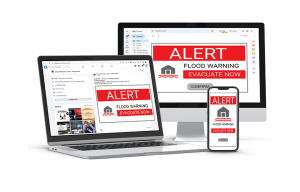 fosters a collaborative environment through platforms that facilitate seamless information sharing and coordination among local, state, and federal agencies, as well as non-governmental organizations and the private sector. This interconnected approach enhances the collective response capability, ensuring a unified effort during emergencies.
fosters a collaborative environment through platforms that facilitate seamless information sharing and coordination among local, state, and federal agencies, as well as non-governmental organizations and the private sector. This interconnected approach enhances the collective response capability, ensuring a unified effort during emergencies.
Real-World Applications and Benefits
From small towns to large metropolitan areas, HQE Systems’ solutions have been deployed with remarkable success. Emergency managers report significant improvements in response times, increased accuracy in resource allocation, and heightened community preparedness levels. In scenarios ranging from hurricane evacuations to urban fire outbreaks, the advantages of our innovative solutions have been clearly demonstrated, showcasing the real-world impact of advanced emergency management technology.
heightened community preparedness levels. In scenarios ranging from hurricane evacuations to urban fire outbreaks, the advantages of our innovative solutions have been clearly demonstrated, showcasing the real-world impact of advanced emergency management technology.
HQE Systems is committed to advancing the field of emergency management through innovation. By addressing the key challenges of planning, preparedness, and collaboration, we provide emergency managers with the tools they need to safeguard their communities against the unpredictable nature of emergencies, ultimately enhancing resilience and safety for all.
Harnessing HQE’s Technological Innovations for Enhanced Evacuation Efforts
In the dynamic landscape of emergency management, the strategic application of technology can significantly elevate the efficacy of evacuation operations. HQE Systems, at the forefront of technological innovation, offers a suite of advanced solutions tailored to meet the complex challenges of emergency evacuations. Among these, the SiSA (Situational Awareness & Alert System), cellular resilience technologies, and specialized features stand out as pivotal tools in transforming evacuation strategies.
SiSA: A New Paradigm in Emergency Communication
SiSA, HQE Systems’ flagship solution, redefines emergency communication by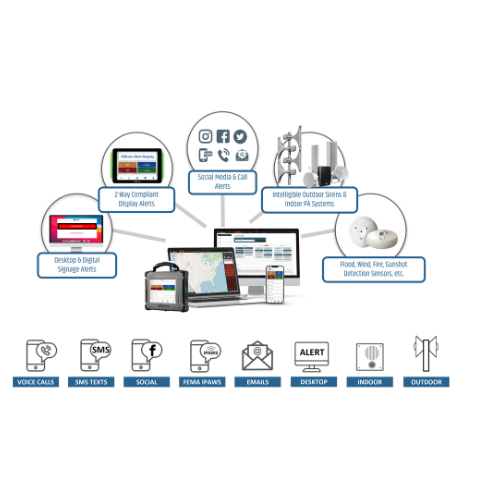 providing comprehensive situational awareness and a robust alert system. This platform integrates seamlessly with existing emergency services, offering real-time data collection and analysis, which is crucial during evacuation scenarios. SiSA’s advanced algorithms analyze threats, predict impact areas, and automatically dispatch alerts to those in harm’s way, ensuring that messages are both timely and relevant.
providing comprehensive situational awareness and a robust alert system. This platform integrates seamlessly with existing emergency services, offering real-time data collection and analysis, which is crucial during evacuation scenarios. SiSA’s advanced algorithms analyze threats, predict impact areas, and automatically dispatch alerts to those in harm’s way, ensuring that messages are both timely and relevant.
The platform’s ability to disseminate information across multiple channels, including social media, SMS, and direct notifications, ensures widespread reach. Moreover, SiSA incorporates accessibility features, making it an invaluable tool for delivering alerts to individuals with disabilities, thereby upholding the ethos of inclusivity in emergency management.
Cellular Resilience: Keeping Communications Online
In today’s connected world, the resilience of cellular networks is paramount during emergencies. HQE Systems has developed cellular resilience technologies designed to maintain communication capabilities even when traditional networks fail. This innovation ensures that emergency managers and affected communities remain connected, facilitating the efficient execution of evacuation orders and the coordination of response efforts.This technology not only supports the operational needs of emergency services but also serves as a lifeline for the public, providing them with access to critical information and the ability to communicate with loved ones during disasters.
Special Features Tailored to Emergency Needs
HQE Systems’ commitment to advancing emergency management is further demonstrated through a range of specialized features designed to address specific challenges:
- Multi-Lingual Support: Recognizing the diversity of communities, SiSA offers
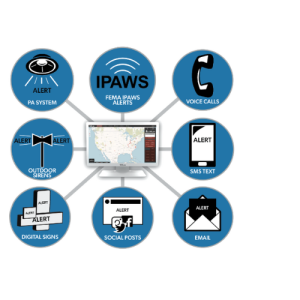 alerts in multiple languages, breaking down language barriers and ensuring that all community members have access to life-saving information.
alerts in multiple languages, breaking down language barriers and ensuring that all community members have access to life-saving information. - Geofencing Technology: This feature allows for targeted alerts to specific areas, ensuring that notifications are highly relevant to those who receive them. In evacuation scenarios, geofencing ensures efficient resource allocation and prevents unnecessary panic outside the impact zone.
- Integration with Local Infrastructure: HQE’s solutions are designed to integrate with local infrastructure systems, enabling smart city technologies to aid in evacuation efforts. Traffic management systems can be optimized in real-time to facilitate smoother evacuations, while public lighting and signage can be controlled to guide populations to safety.
Elevating Evacuation Strategies with HQE Technology
The integration of HQE Systems’ technological innovations into emergency management practices offers a holistic approach to enhancing evacuation efforts. From SiSA’s comprehensive alert capabilities to the resilience of cellular communications and the strategic application of specialized features, these tools collectively ensure a more informed, efficient, and inclusive response to emergencies.
As we continue to face the challenges posed by natural and man-made disasters, the role of technology in mitigating risks and safeguarding communities has never been more critical. HQE Systems remains dedicated to providing emergency managers with the tools they need to navigate these challenges, leveraging cutting-edge solutions to foster safer, more resilient communities.
Toward a Future of Enhanced Resilience: Embracing HQE’s Innovations As we navigate the complexities of emergency management, the significance of innovation, planning, and preparedness cannot be overstated. The insights provided throughout this discussion underscore the transformative potential of advanced technological solutions, particularly those developed by HQE Systems, in enhancing the safety and efficiency of evacuation operations. From the comprehensive situational awareness offered by SiSA to the unparalleled connectivity ensured by cellular resilience technologies, HQE Systems stands as a beacon of innovation in a field where the stakes are invariably high.
The integration of these technologies into emergency management practices marks a pivotal shift towards more informed, agile, and inclusive evacuation strategies. By leveraging tools designed to overcome the intrinsic challenges of communication, coordination, and accessibility, emergency managers are equipped to make decisions that save lives and preserve communities. The real-world applications of HQE’s solutions have already demonstrated their value, showcasing not just the feasibility but the necessity of adopting such innovations in our collective quest for resilience.
This exploration serves as a call to action for emergency managers, community leaders, and policymakers alike to prioritize investment in planning and preparedness. Embracing the technological advancements and strategic insights offered by HQE Systems and informed by the guidelines and research referenced throughout this blog, is not merely advantageous—it is imperative. As we look to the future, let us commit to a paradigm where technology and preparedness converge to create safer, more prepared communities capable of facing the uncertainties of tomorrow with confidence.
leaders, and policymakers alike to prioritize investment in planning and preparedness. Embracing the technological advancements and strategic insights offered by HQE Systems and informed by the guidelines and research referenced throughout this blog, is not merely advantageous—it is imperative. As we look to the future, let us commit to a paradigm where technology and preparedness converge to create safer, more prepared communities capable of facing the uncertainties of tomorrow with confidence.
In conclusion, the journey toward enhanced emergency preparedness and response is ongoing, but with the tools and insights discussed here, particularly those offered by HQE Systems, we are well-equipped to navigate this path, transforming challenges into opportunities for growth and innovation.
HQE Systems is a certified Veteran Owned Company. For more information about HQE Systems Inc. and its emergency management, electronic security, and integration solutions, please visit www.hqesystems.com.

Contact: David Ditto (Early Warning Systems Subject Matter Expert)
Email: David.Ditto@hqesystems.com
Phone Number: (843) 872-7020
____________________
HQE Systems, Inc. | HQE is a Minority-Owned Service Disabled Veteran Owned Small Business (SDVOSB) providing full solutions for: Mass Notification Systems, Electronic Security Systems, Software Development Services, Contract Support, and Prototyping Services. As a brand-agnostic solutions provider, HQE prides itself in providing the BEST solution for the project. HQE possesses over 30+ factory certifications and reseller licenses to ensure our clients receive the highest quality service at the ideal budget. HQE can provide full design, installation, integrations, upgrades, and long-term maintenance support for any size and scope project.

